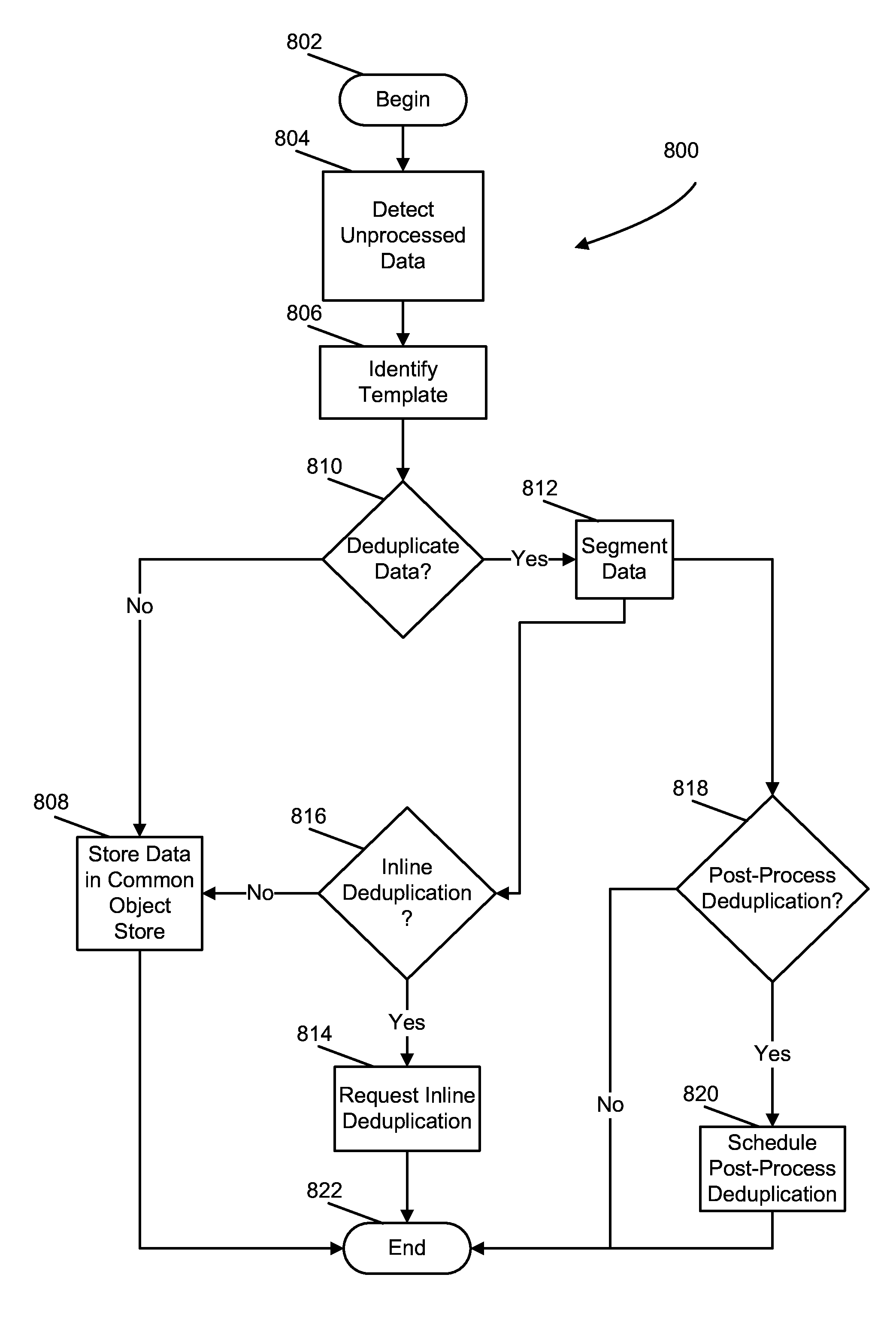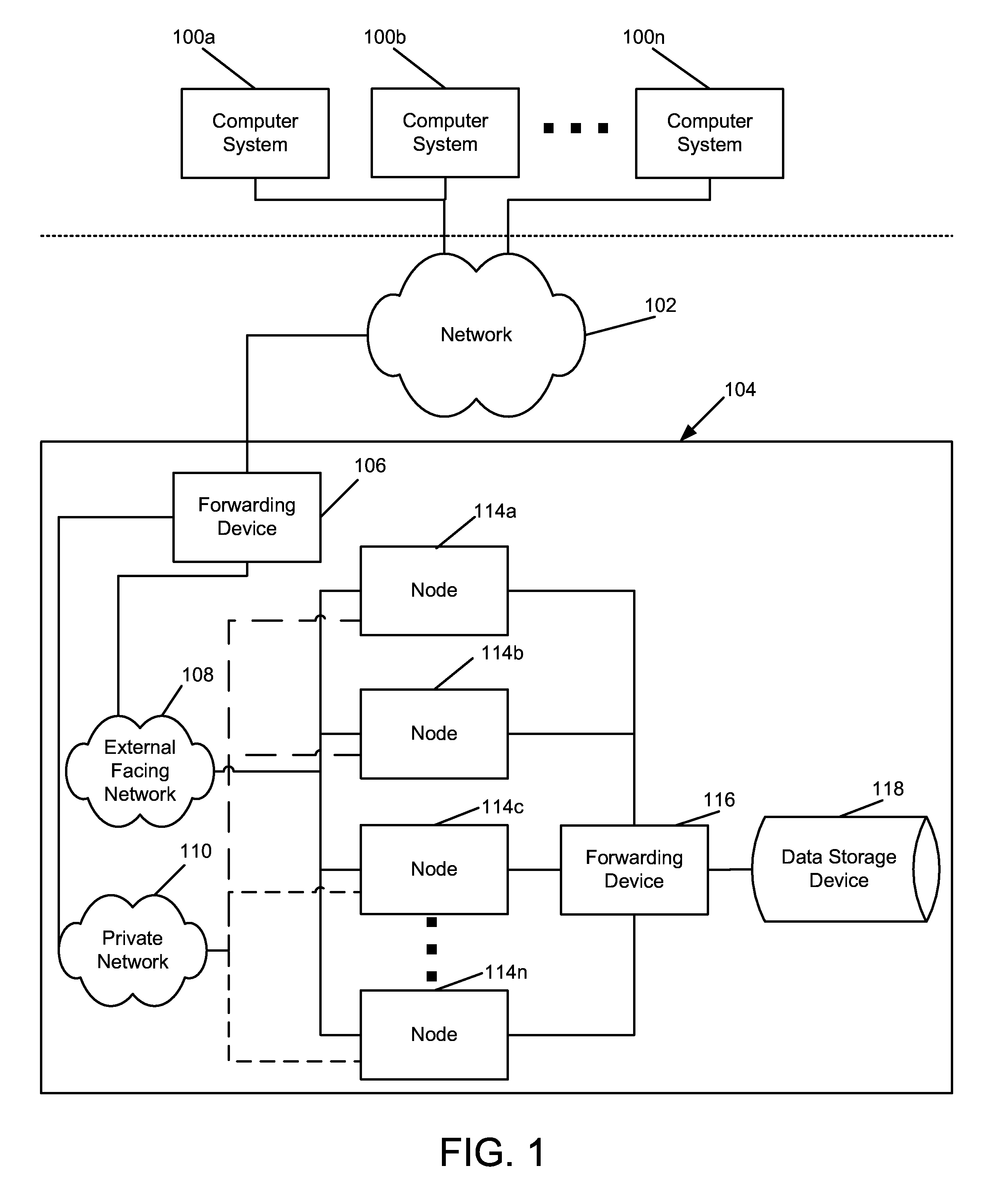Multi-node hybrid deduplication
a hybrid deduplication and multi-node technology, applied in the field of data storage, can solve the problems of significant challenges faced by systems tasked with storing and accessing large amounts of data, and achieve the effect of facilitating the uncoupling of conventional pairings
- Summary
- Abstract
- Description
- Claims
- Application Information
AI Technical Summary
Benefits of technology
Problems solved by technology
Method used
Image
Examples
Embodiment Construction
[0038]At least some embodiments disclosed herein implement a scalable multi-node hybrid deduplication system. In these embodiments, the hybrid deduplication system is configured to receive and deduplicate data. For instance, in at least one embodiment, the hybrid deduplication system receives data from one or more external computer systems via one or more standardized interfaces. The hybrid deduplication system determines whether the received data is targeted for deduplication processing and, if so, determines the type of deduplication processing to apply to the received data. For example, the hybrid deduplication system may apply (e.g., inline or post-process) summary-based deduplication, content-based deduplication, or both. The hybrid deduplication system persistently stores the received and deduplicated data within a common object store configured to support efficient, scalable, and distributed parallel processing of the received data in future. This processing may include furth...
PUM
 Login to View More
Login to View More Abstract
Description
Claims
Application Information
 Login to View More
Login to View More - R&D
- Intellectual Property
- Life Sciences
- Materials
- Tech Scout
- Unparalleled Data Quality
- Higher Quality Content
- 60% Fewer Hallucinations
Browse by: Latest US Patents, China's latest patents, Technical Efficacy Thesaurus, Application Domain, Technology Topic, Popular Technical Reports.
© 2025 PatSnap. All rights reserved.Legal|Privacy policy|Modern Slavery Act Transparency Statement|Sitemap|About US| Contact US: help@patsnap.com



